Introduction
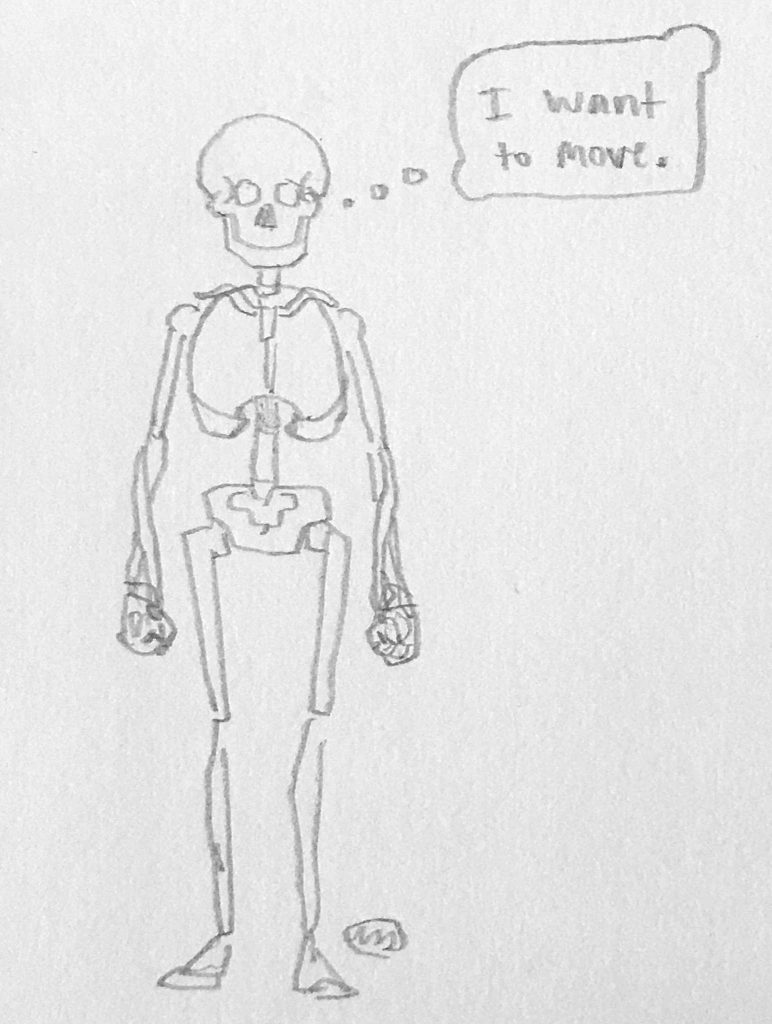
So you’ve learned a bit about the skeleton. That’s great! But now, that skeleton wants to move.
Of course, on its own, the skeleton is incapable of movement – it’s basically just a collection of sticks. In order to move, the body requires muscles. In addition to providing a means of locomotion, muscles also keep us alive, surrounding and creating the walls of our internal organs.
The 3 Types of Muscles
Simply put, muscles allow us to exist, and live. Without muscles, our heart would stop beating (cardiac muscle), our internal organs would cease to exist (smooth muscle), and our skeletons would be incapable of movement (skeletal muscle). In other words, without muscle, we’d just be a hollow shell – like an empty suit of armor.
As suggested by the title of this section (and the examples I just gave), there’s three types of muscle found throughout the body. For the sake of clarity, I’ll repeat them:
Generally speaking though, in art, we don’t talk about smooth or cardiac muscles very often. For one, both of those muscle types are involuntary, so we don’t have any direct control over them.
For another, their functions are either extremely limited, fairly self explanatory, or both – which will be elaborated on in the respective section for each muscle type.
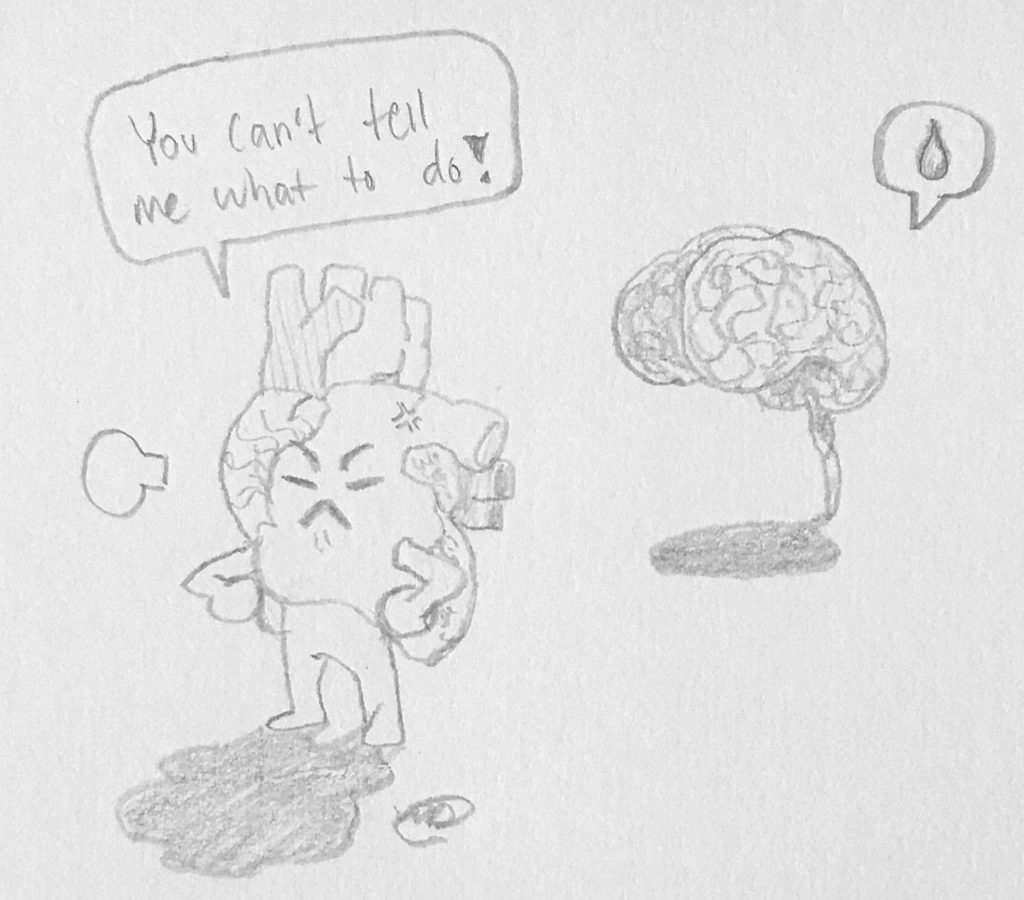
Our heart is not a slave to our decisions or desires.
Cardiac Muscle
Cardiac muscle is, unsurprisingly, only found in the heart. As previously mentioned, it’s involuntary – you have no direct control over your heartbeat. If you did, you could stop your heart at will, which… wouldn’t be especially useful. It’d be like having an off-switch for your brain.
That said, cardiac muscle is pretty fascinating – it’s just not especially relevant to art.
It’s probably for the best that we can’t control our hearts.
Smooth Muscle
Smooth muscle, much like cardiac muscle, is completely involuntary. Unlike cardiac muscle, smooth muscle is found all throughout the human body. It can be found in the lining of all your “hollow organs,” like your bladder, stomach, intestines, and the arteries and veins of your circulatory system; as well as in your irises, where it controls the contraction and dilation that affects the amount of light allowed into our pupils (Smooth muscle).
As with cardiac muscle, knowledge of smooth muscle isn’t that important for art. You don’t really need to know why your pupils dilate, or why your intestines perform peristalsis, because they just do – those functions are just part of being alive. It’s good to know that those functions exist, but you don’t need a detailed understanding of them to create a convincing human figure – you just need to know that they happen.
Most smooth muscle functions are also ubiquitously well understood.
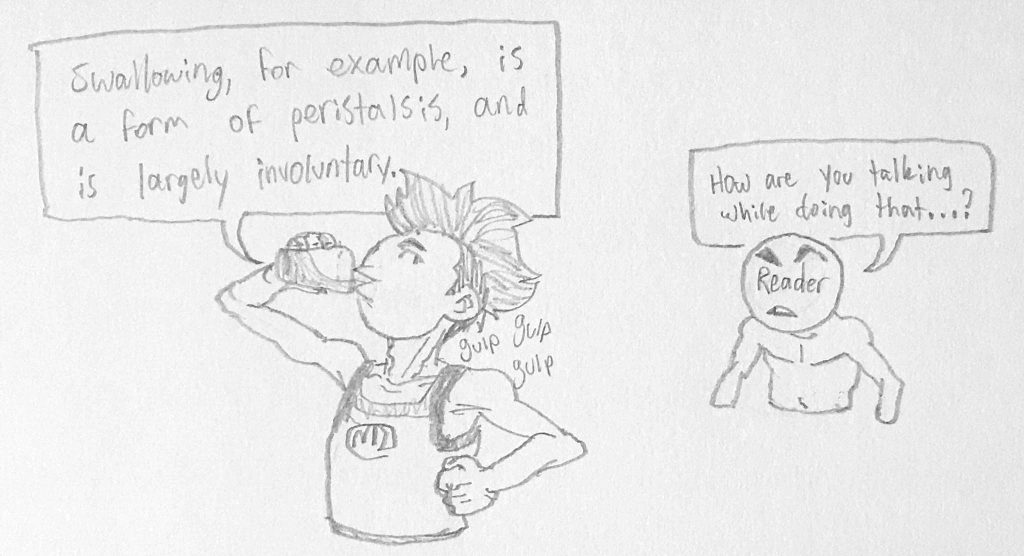
Things like swallowing don’t really need to be explained.
Skeletal Muscle
The muscle type most relevant to art is skeletal muscle, which, as its name suggests, allows us to move our skeleton. This is the only voluntary muscle type – one which we have direct control of. Any time you decide to move a part of your body, you’re using skeletal muscles to move your skeleton. I’m using skeletal muscle(s) right now, in order to press keys on my keyboard and type this sentence.
Skeletal muscles are generally the most well known and instantly recognizable muscles, forming the exterior appearance and aesthetic of the human body. Your biceps, deltoids, pecs, and quadriceps for example, are all skeletal muscles – most of you are probably quite familiar with those muscles, even if you don’t know anything about anatomy.
To be clear, skeletal muscles can be controlled involuntarily – your diaphragm (the muscle that controls your breathing), is made of skeletal muscle, and often moves involuntarily. While you can breathe voluntarily, your brain usually does that work for you. The key is that voluntary control is possible, as is necessary when holding your breath, or talking.
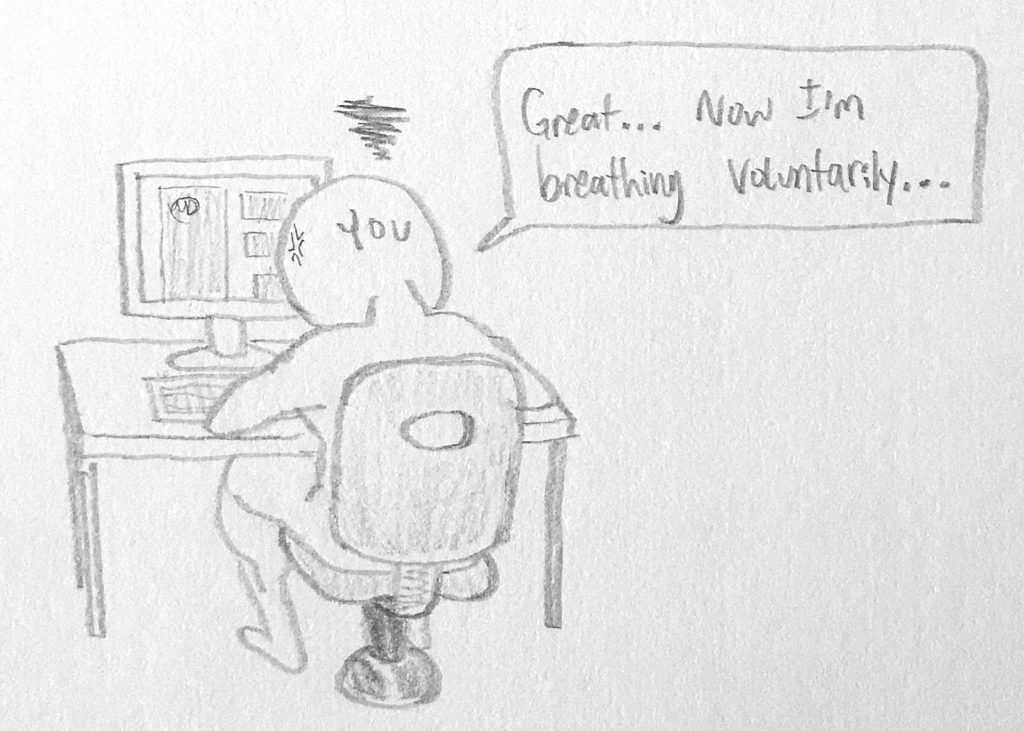
ψ(`∇´)ψ
The Importance of Functional Knowledge
That may have felt like an overwhelming amount of information to absorb, but you can rest easy knowing that most of it wasn’t that important. Like I said, artists don’t really need to know anything about cardiac or smooth muscle.
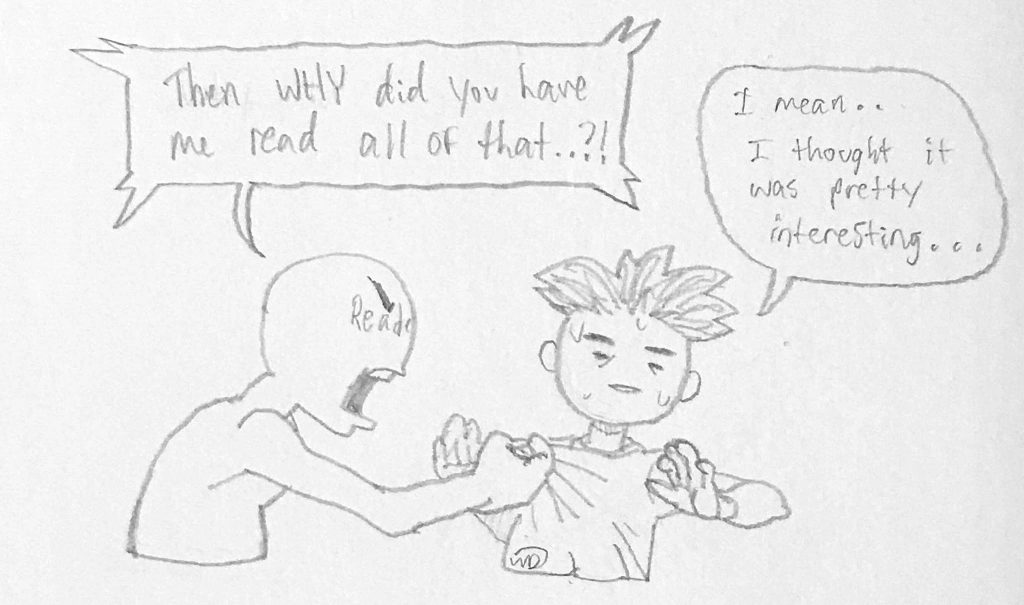
Skeletal muscles, however, are quite important – but like I’ve said in my previous post, trying to memorize all of them based purely upon their location, name, and appearance, is… not realistic.
Let me give you an example – imagine how difficult it would be to draw the engine of a car without knowing anything about the mechanics of an automobile. It would be practically impossible.
A mechanic, on the other hand, even one without any drawing experience whatsoever, would be (at the very least) capable of drawing the basic shapes that represent specific parts. This is because, aside from having seen those parts hundreds of times, they would have a more developed knowledge of what each part does. They would understand that, without a certain part, the car would not be able to function properly.
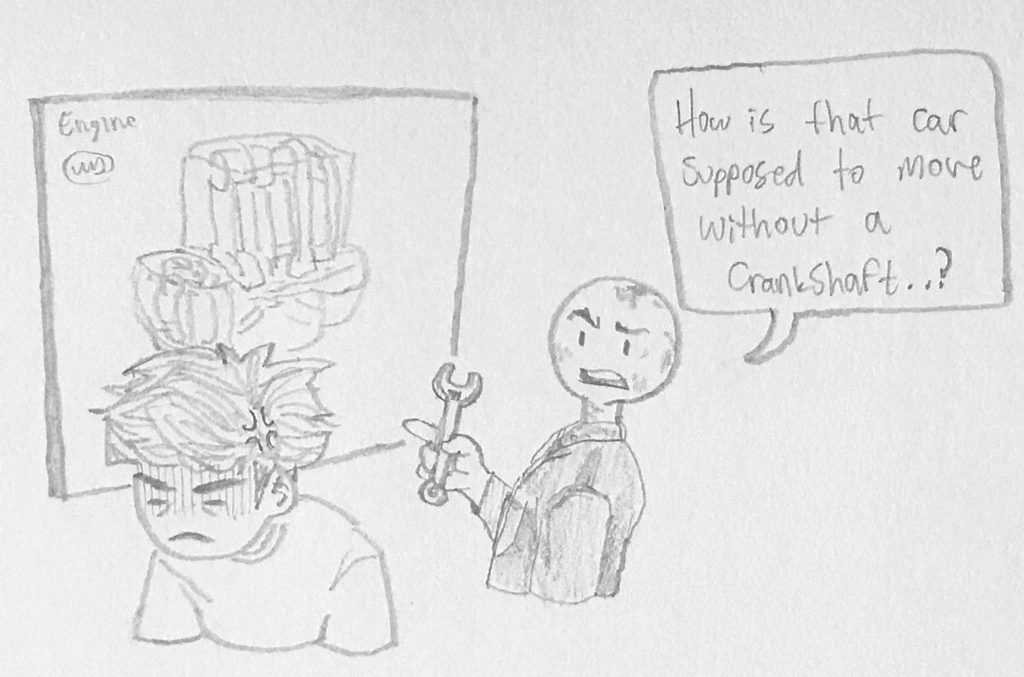
I don’t really know anything about cars yet.
This same idea can be applied to learning about the human body. I mentioned in the previous post that there’s about 600 muscles in the human body. Now, that number includes smooth muscles, so you don’t need to learn all of them.
Regardless, if you instead focus on learning the function of each muscle, it becomes much easier to memorize them, because – much like a mechanic understands that an engine cannot function without a certain component – you will come to understand that a human body cannot function without a certain muscle.
With that in mind, rather than thinking about muscles as abstract concepts, names, or shapes – think of them instead as parts of an engine. Apply functions to them.
Don’t think of your bicep simply as, “the bicep,” think of it as, “the muscle that curls your arm.” If you want to get more academic with the terminology, you could think of it as, “the muscle that enacts flexion between your forearm bones and humerus.” Think of your muscles as their definitions, not their names.
Muscles are Weird and Confusing
In contrast to bones, which are often relatively simple and intuitive in the ways they connect and interact with one another, muscles are.. a bit of a mess. Learning certain muscles can be counterintuitive, and often downright confusing.
Let me start with an example. The pectoralis major muscle(s), often referred to as “the pecs,” attach to the humerus (your upper arm bone). In other words, your pecs are actually, in some ways, an arm muscle. This might seem obvious, but that fact alone was surprising to me at first. Before I started learning anatomy, I just thought the pecs sat on your chest.
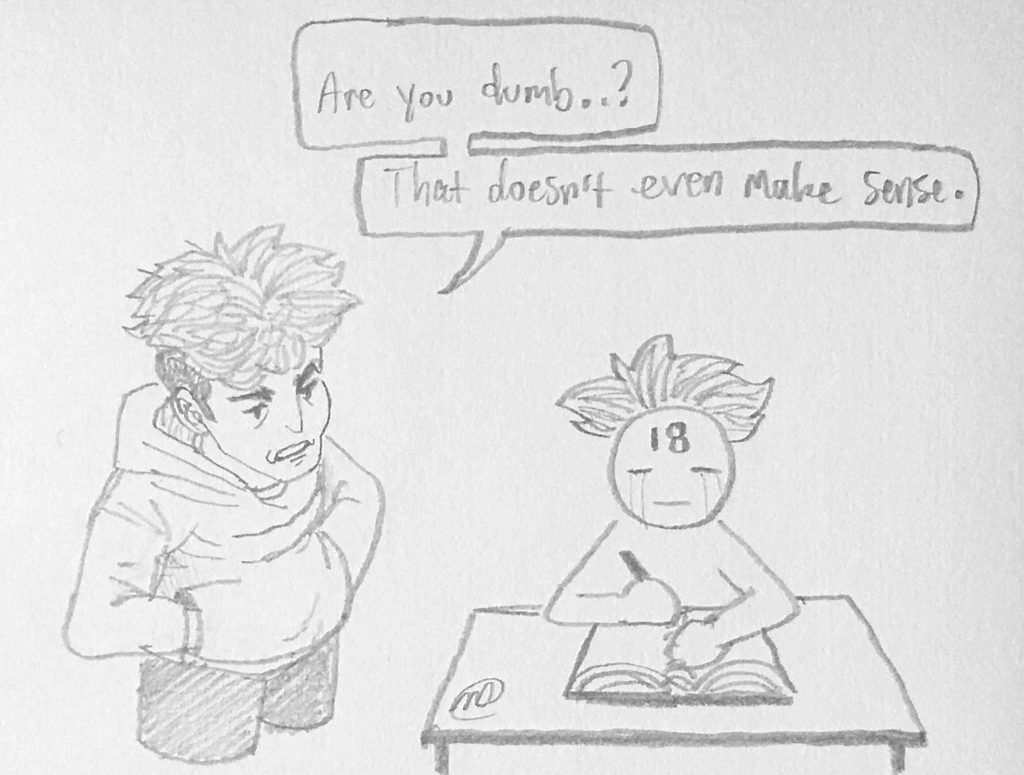
I wasn’t thinking very logically about anatomy, at the time.
In addition, the way this muscle connects to the humerus is rather strange. In a resting position (arms at your side), the upper portions of your pec muscle attach at the (relative) lowest point of your humerus, while the lowest portions attach at the (relative) highest point of your humerus. That alone would be pretty confusing, but that’s not all.
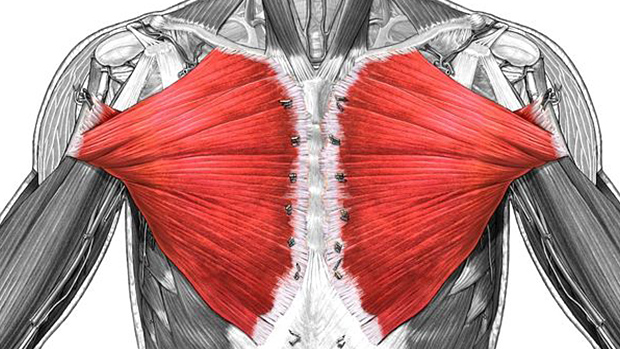
Note the twisted, fan-like nature of the pec muscles, where the lower portions of the pec muscle twist underneath the upper portions, and attach to the humerus, closer to the shoulder.
When your arm is raised, the attachments become intuitive, with higher sections of the pec corresponding to a high connection point on the humerus, and so on.
Obviously, the attachments themselves aren’t moving, but the position of the arm causes the fan-shape to appear as though it’s unfolding. This makes the pectoralis major an extremely difficult muscle to visualize, because its appearance changes depending on the position/movement of the arm(s).
This example highlights yet another reason why memorizing muscles based upon their appearance is basically pointless, since the appearance of certain muscles is inconsistent.
So… How do I Study Muscles?
Well, thankfully, this is a question I can offer some answers to. Unlike bones, muscles are (generally) easier to see on the body. Of course, you can see certain bones on most people, like the olecranon (elbow) and clavicle (collarbone), but, by virtue of the fact that bones lie under the surface of our skin (unless you seriously mangle one of your limbs), they’re harder to observe.
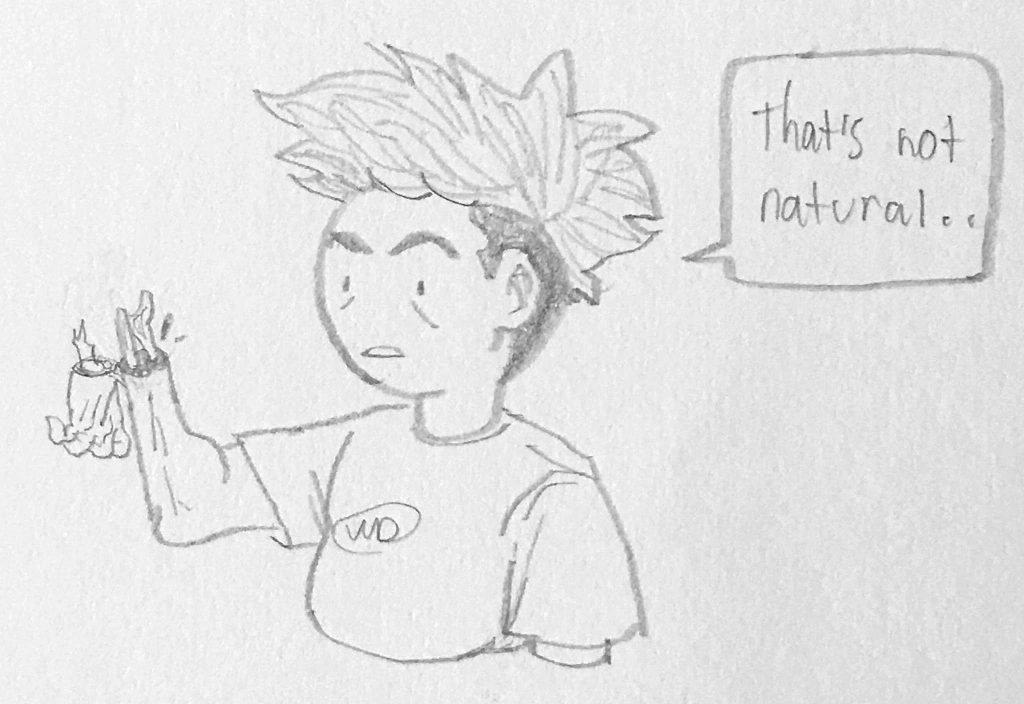
Being able to see your bones is usually a bad thing.
There are tons of ways to study the muscles of the human body. Cadavers (dead bodies) are actually a fairly common method of study in art schools – yes, seriously. Of course, corpses aren’t exactly the most accessible means of study.
Figure drawing is, as always, a great method for studying the human body. There are tons of free websites, like SketchDaily, Line-of-Action, Quickposes, and more, that provide massive libraries of model photos (nude and clothed) for artists to draw.
Live figure drawing is also an extremely effective method of study (generally more effective than studying from photographs), but it’s rather difficult to find live sessions at the moment, due to the ongoing pandemic.
In my opinion, one of the best ways to study human muscle anatomy is to work out. Not only will you start to develop a reference with your own body (something you always have access to), but you’ll reinforce your understanding of muscle functions. When you’re really struggling to curl a heavy weight, you can feel your biceps brachii muscle straining.
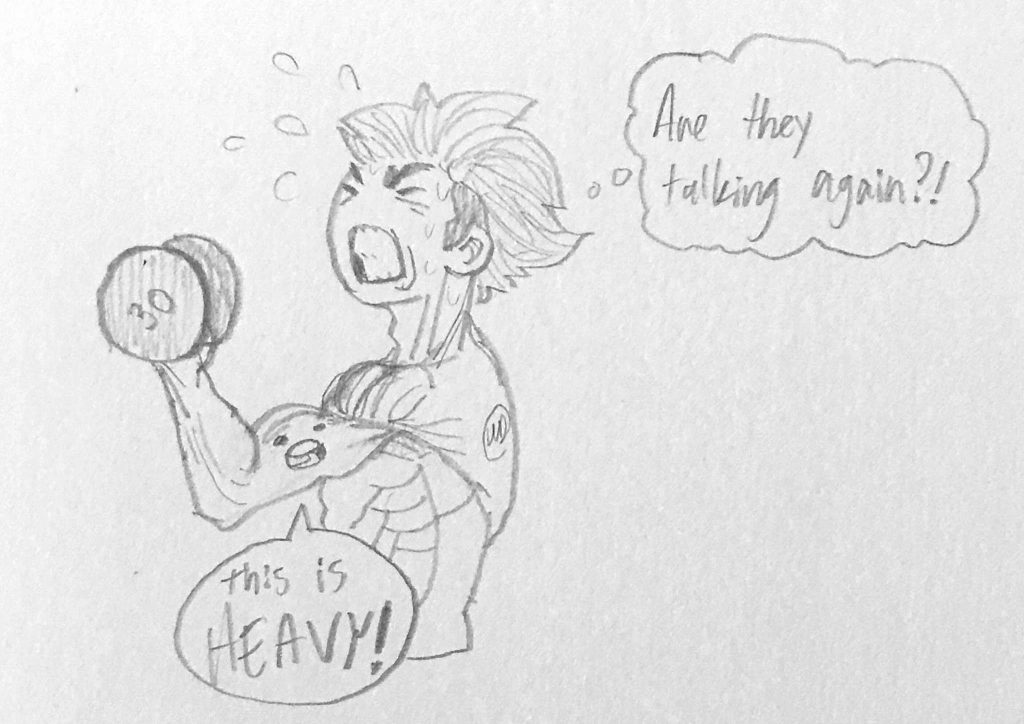
After doing pushups, you can feel your chest and arm muscles burning. Through this experience, you become more familiar with the functions of individual muscles, and which muscles work in tandem to make certain movements possible.
Along that train of thought, another method I’d like to highlight is the study of bodybuilders.
As you might expect, bodybuilders are an excellent reference for studying muscular anatomy. The very art of bodybuilding is defined by a striving for ‘perfect’ bodily aesthetics, or (perhaps less subjectively), extremely clear muscle definition.
As such, by virtue of their profession, bodybuilders provide us with a clear visual reference of various muscles and muscle groups.
The shapes of common muscles (in terms of visibility) are pushed to an almost cartoonish visual extreme. Leg muscles like the quadriceps (primarily the vastus lateralis, rectus femoris, and vastus medialis), arm muscles like the biceps brachii and triceps brachii, and back muscles like the trapezius, are so clearly defined, they appear to almost burst from the bodybuilder’s skin.
In some cases, it becomes possible to distinguish the different parts of individual muscles – like the two separate ‘heads’ of the bicep.
Aside from having extremely well defined muscles familiar to most people, bodybuilders also strive to define less superficial muscles. On Shawn Rhoden’s left leg (our right), you can clearly see his sartorius muscle, a muscle not visible on most people. The coracobrachialis, another tough-to-see muscle, can be observed on each and every one of the bodybuilders shown above (aside from the last one, because it’s obscured by his back muscles).
For these reasons, bodybuilders provide an excellent reference for muscular anatomy – as though an ideal study subject leapt straight out of the pages of an anatomy textbook.
Studying Different Body Types
Because of the importance of understanding musculature, it’s not uncommon for classically trained and/or professional artists to gravitate more towards drawing relatively muscular figures.
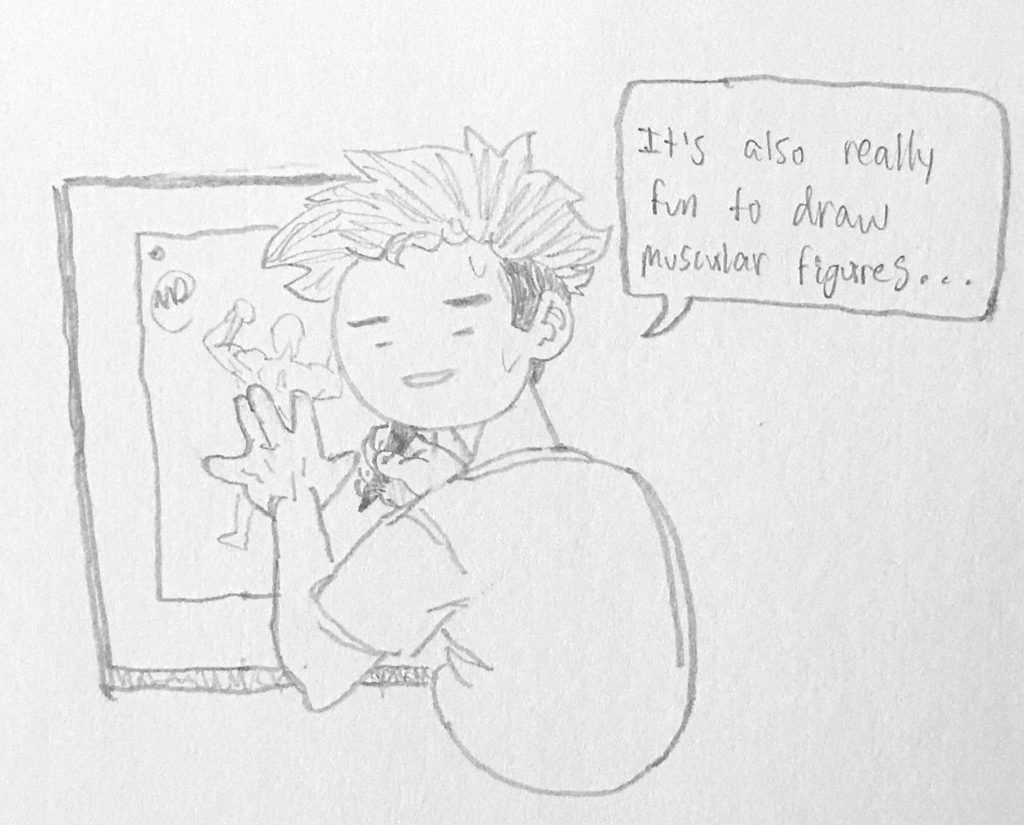
Of course, most people don’t look like bodybuilders. I want to make it clear that bodybuilders provide an excellent reference for studying muscular anatomy – they are not a good reference for learning to draw everyday people. As such, if you intend to depict realistic human figures, it’s important to study all sorts of body types.
Fat is extremely common across all sorts of animal species, and it’s an important source of energy. Most people have deposits of fat on their body. Female breasts, for example, are basically just balloons of fat attached to the pecs. Learning how to draw fat on the human body is a necessary part of depicting realistic figures, so it’s important to study less hyper-muscular figures when you’re practicing figure drawings.
Having a deep understanding of how to render softer, fattier figures, is often a mark towards mastery amongst figure artists.
Closing Thoughts; Critiques Welcome!
Well, that was a lot of information. I may have went slightly overboard in some places.. but I did make an effort to trim the fat (no pun intended) off this post. This post is actually over a day late, because of how much content I decided to include.
Future posts will probably be shorter. As much as I love talking about art and anatomy, I don’t have time to spend several hours on each blog post.
Much like my knowledge of skeletal structure(s), I’ve still much to learn about muscle anatomy. These blog posts have evolved into a way for me to reinforce my own knowledge, while sharing with you my learning experience. I hope that these posts are, at the very least, appealing to look at, and somewhat enjoyable to read.
I think anatomy is an extremely fascinating and exciting topic, but I realize that not everyone cares about the minute details of muscle anatomy, the mechanics of locomotion, or the structure(s) of our skeleton. My goal is to make these posts as enjoyable as possible for artists and non-artists alike, so if you’ve any criticisms to offer (as a member of either group), please feel free to leave them in the comment sections.
And as always, thanks for reading.
Sources
- Arnold Schwarzenegger. (2016, September 29). [Photograph]. Wikipedia. https://upload.wikimedia.org/wikipedia/commons/thumb/0/05/Arnold_Schwarzenegger_1974.jpg/800px-Arnold_Schwarzenegger_1974.jpg
- Helle Trevino. (2019, December 18). [Photograph]. Female Bodybuilder of the Year! https://www.digitalmuscle.com/master-archive/female-bodybuilder-of-the-year/
- Human Anatomy Muscles of the Body. (n.d.). [Illustration]. eBay. https://www.ebay.co.uk/itm/HUMAN-ANATOMY-MUSCLES-OF-THE-BODY-Poster-Print-Education-Science-A3-A4-Laminated-/383379150968
- Pectoralis Major. (09-01-2006). [Illustration]. T-Nation. https://www.t-nation.com/training/right-way-to-stretch-the-pecs
- Shawn Rhoden. (2015, September 15). [Photograph]. Facebook. https://www.facebook.com/TowerFitnessCenter/posts/the-new-mr-olympia-2018-shawn-rhoden-/1800036363379599/
- Smooth muscle. (2018, April 28). In Wikipedia. https://web.archive.org/web/20180828134305/https://opentextbc.ca/anatomyandphysiology/chapter/10-8-smooth-muscle/
- Unknown Male Bodybuilder. (n.d.). [Photograph]. Pinterest. https://www.pinterest.ph/pin/269723465161846054/
Disclaimer
All information in these posts is my own words, unless explicitly stated otherwise. None of this information is quoted, nor paraphrased, unless explicitly stated otherwise. Any similarities between my own words, and the informative sources/hyperlinks provided is purely coincidental, unless explicitly stated otherwise.
In any case where I am using someone else’s words (or imagery), the source will be cited internally, with a link to that source provided either within the internal citation, at the end of the post under “Sources,” or both.

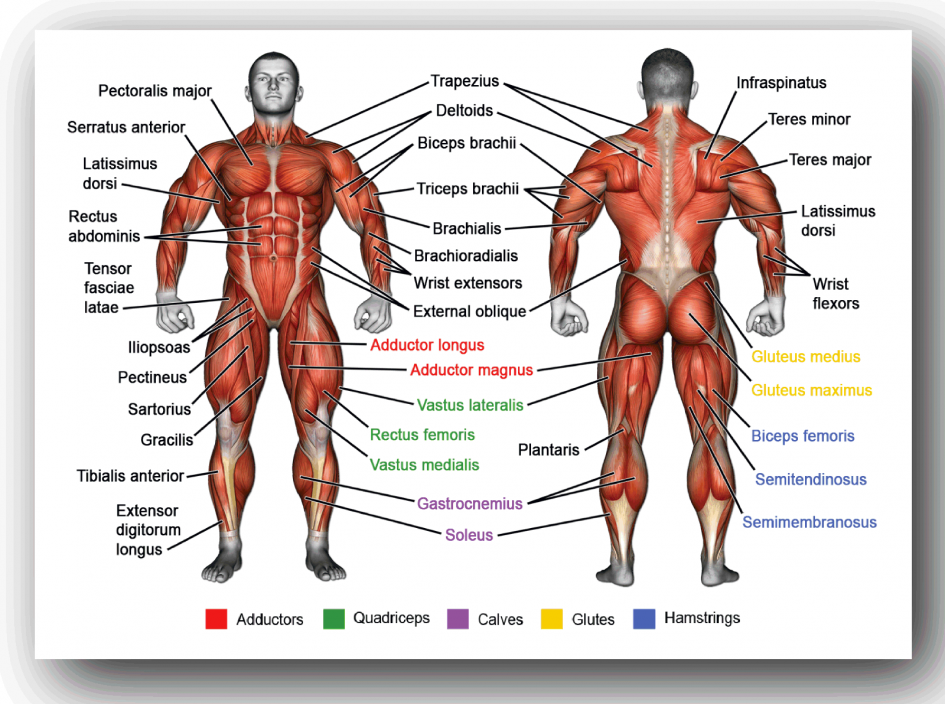
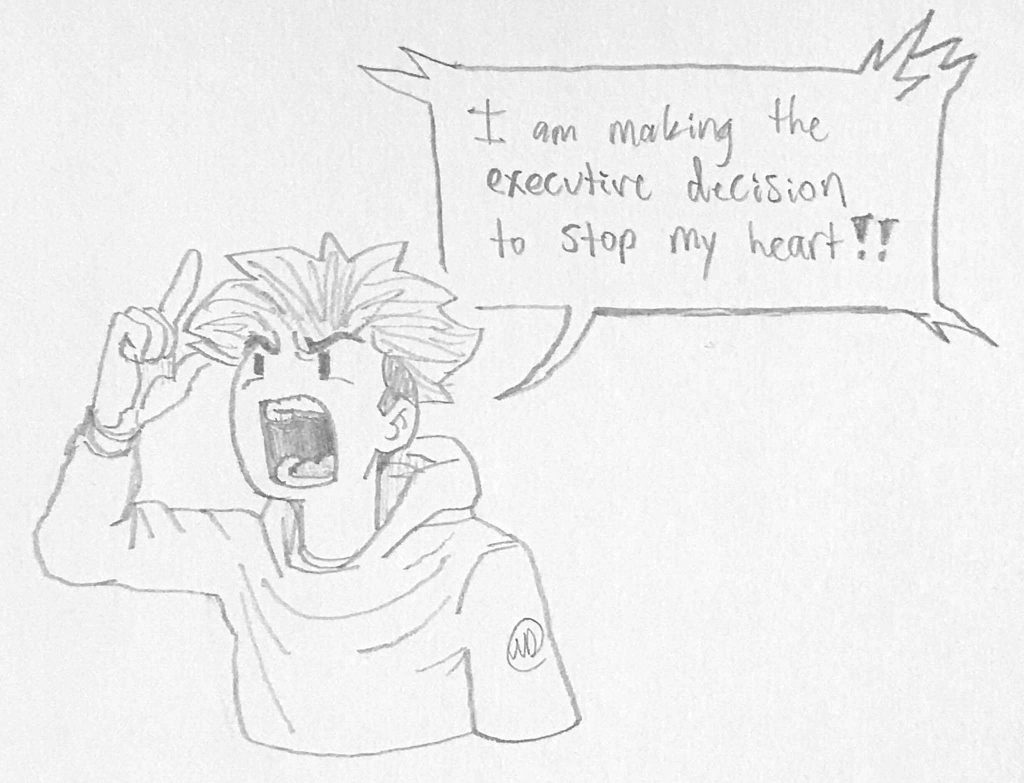
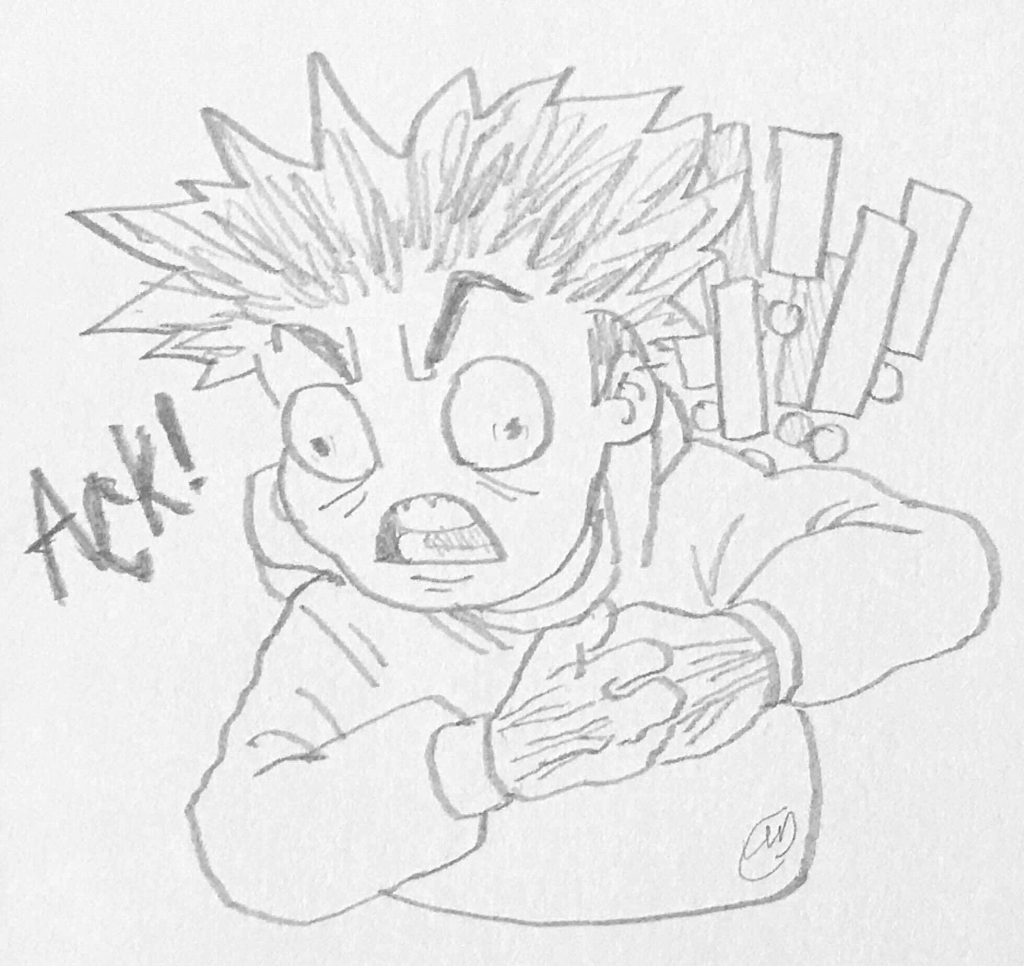
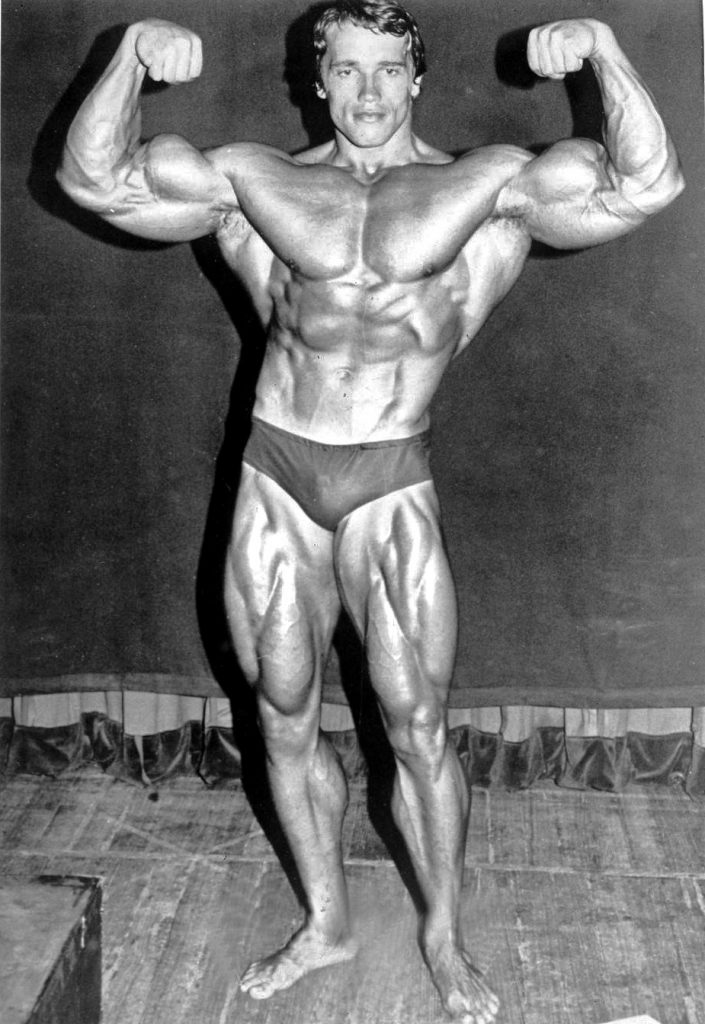
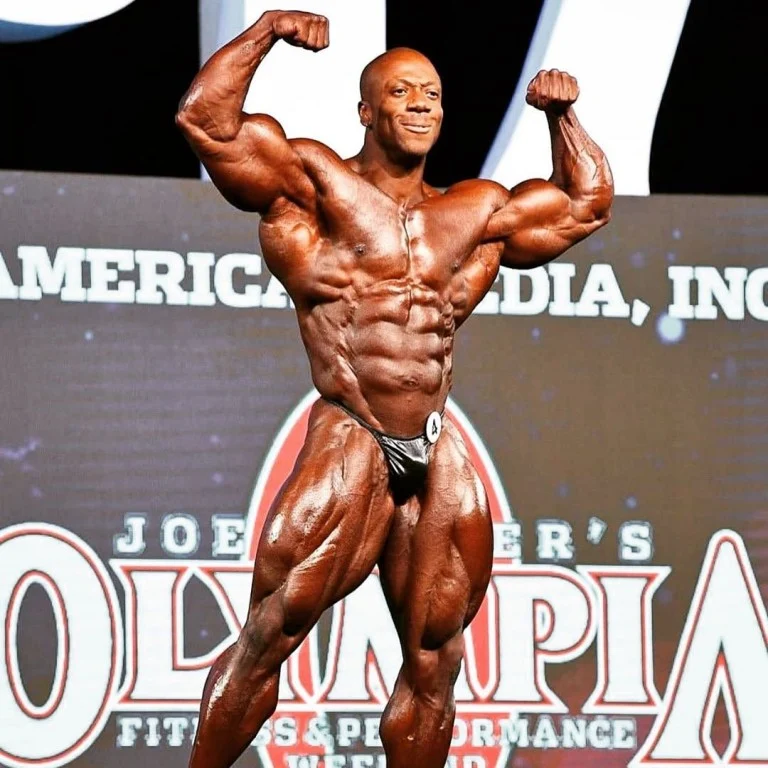
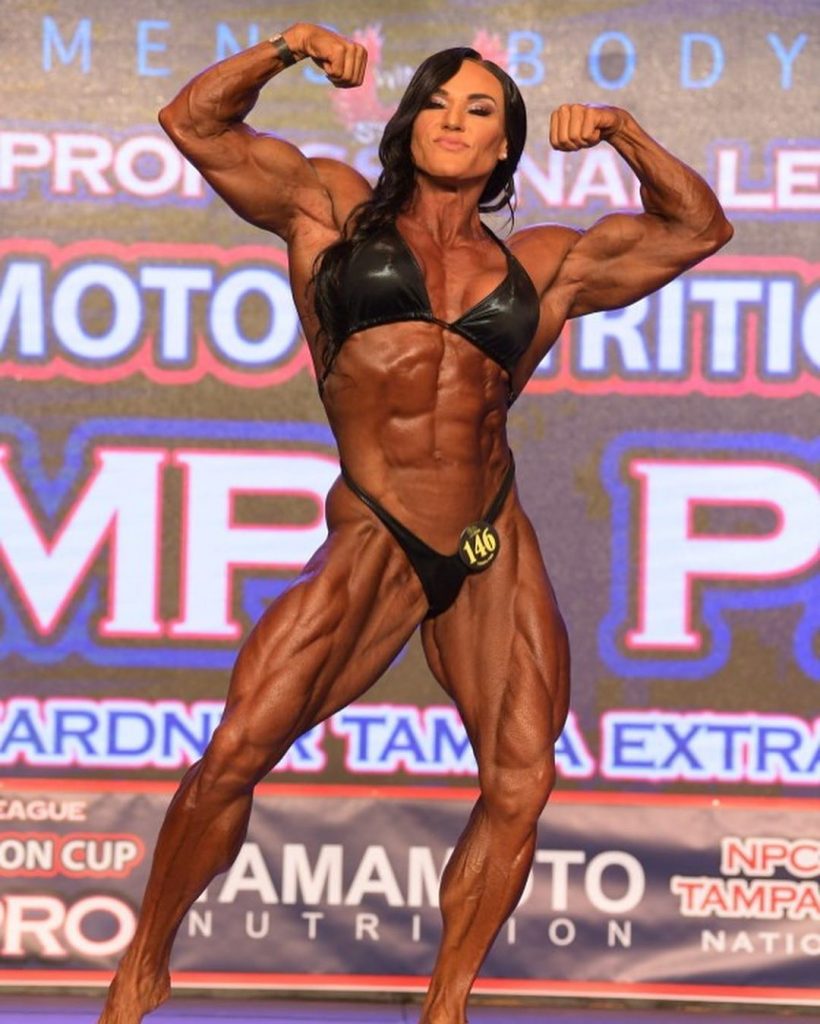
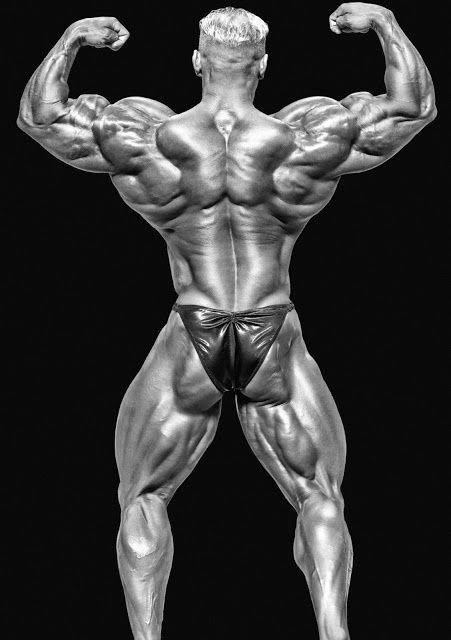
March 4, 2021 at 4:05 pm
I READ THIS, AND NOW I AM EXTREMELY ANGRY.
March 4, 2021 at 7:47 pm
AH, SHOOT!!!!
May 20, 2025 at 2:37 am
Crazy chicken 3d encourages creativity in gameplay, allowing players to devise their own tactics for victory.
March 8, 2021 at 8:24 pm
It was a lot of information to take in, but I can say I’ve learned tons about the human muscles and how to draw them. I also like seeing the sketches you include in your blog posts. They fit well with the overall theme of your blog and add an extra layer of personality to the site. Looking forward to reading your next post!
March 8, 2021 at 10:20 pm
Yeah, I may have gone too far in a few places. Like I said at the end, I’m still learning all this stuff, so it’s easy for me to get caught up in the excitement of it. I’m glad you liked it, though! Those doodles set me back a day or two, but I think they make the posts easier to read.
Future posts will be shorter – I most certainly do not expect people to read all of this.
April 8, 2024 at 2:07 pm
Yeah, I may have gone too far in a few places. Like I said at the end, I’m still learning all this stuff, so it’s easy for me to get caught up in the excitement of it. I’m glad you liked it, though! Those doodles set me back a day or two, but I think they make the posts easier to read.
Future posts will be shorter – I most certainly do not expect people to read all of this.
TO
It was a lot of information to take in, but I can say I’ve learned tons about the human muscles and how to draw them. I also like seeing the sketches you include in your blog posts. They fit well with the overall theme of your blog and add an extra layer of personality to the site. Looking forward to reading your next post!
July 12, 2024 at 1:17 am
This article is a great resource for those who want to learn more about the human body, especially those with a passion for art and game development.
November 28, 2024 at 4:31 am
Those interested in the human body, particularly those with a penchant for visual art and video game design, will find this article to be an excellent resource.
January 24, 2025 at 9:56 am
There are many well-known video games out there now, but you might not know about this one. Take some time to play it and see how great it is!
March 20, 2025 at 6:57 am
It’s a good time for me to change
March 26, 2025 at 3:11 am
Your approach to sharing your learning journey is really inspiring! It’s cool that you’re making this process beneficial for both yourself and your readers.
April 4, 2025 at 4:58 am
Although there are advertisements in the solar smash free edition, users may avoid them by purchasing the premium version.
April 12, 2025 at 1:44 am
If you dream of traveling the world, Worldguessr is the perfect game for you. It lets you explore different places, learn about various regions, and improve your knowledge while having a blast!
April 16, 2025 at 4:12 am
Geometry Dash offers a fun, electrifying way to test your reflexes. It’s a unique platformer with a rhythm twist you won’t forget!
April 18, 2025 at 2:34 am
Sprunki is a music creation game inspired by Incredibox. You can experience it online.
April 18, 2025 at 2:37 am
Run 3 Unblocked is a fun and challenging game that allows you to run, jump, and dodge obstacles while collecting coins.
April 18, 2025 at 2:40 am
OVO Unblocked is an exhilarating platformer game that offers fast-paced action and challenging parkour gameplay.
April 18, 2025 at 2:44 am
Audio Converter: Free online tool to convert audio files between different formats. Get started now!
April 18, 2025 at 2:46 am
Domain Name Generator – Generate domain names of different styles for you.
April 18, 2025 at 2:47 am
AI Describe Picture: Free tool to analyze and describe any image in detail.
April 18, 2025 at 4:51 am
This explanation makes sense. Skeletons provide the frame, but muscles do the work. It’s fascinating how complex movements are built from this cooperation. Retro bowl
May 8, 2025 at 12:43 pm
This title ‘The Mangled Mess of Human Musculature’ is intriguing. But the intro “He wants to move” is a bit cryptic. How does it relate to drawing human muscles?
May 20, 2025 at 7:32 am
This title “The Mangled Mess of Human Musculature” sounds intense. I’m curious to learn how this relates to drawing human anatomy.
May 21, 2025 at 6:45 am
Understanding how muscles power movement is key. It’s like calling plays in Retro Bowl, you need to know what each player (muscle type) can do. Cardiac keeps the heart pumping, smooth muscle runs quietly in the background, and skeletal muscles are the ones we consciously control. Forget the empty suit of armor, think of a perfectly executed Retro bowl touchdown – all thanks to muscle synergy!
June 13, 2025 at 3:40 am
Crazy Cattle 3D lets you go hoof-to-hoof in a hilarious fight for supremacy. Bash your way through a flock of foes in this chaotic and totally unpredictable game.
June 25, 2025 at 4:18 am
ok thanks
June 25, 2025 at 7:29 am
Nothing can limit your moves except you. Pay attention from the first moves so that the space Block Blast Unblocked does not fall into a difficult situation.
June 25, 2025 at 7:45 am
Wow, this was such a detailed and surprisingly fun read! I really appreciate how you broke down something as complex as muscle anatomy in a way that’s actually understandable. The comparisons to machines and the workout advice made it even more relatable. As someone trying to improve my figure drawing, this gave me a whole new perspective. Thanks a lot for sharing your journey and insights!
July 21, 2025 at 1:13 am
The scientific explanation is deep but still close, making me understand the muscle structure better.
July 23, 2025 at 8:11 am
I am sharing this topic more. I am struggling with my own passing skills Head Soccer.
July 28, 2025 at 10:53 am
A standout feature of geometry dash is its comprehensive level editor. It allows players to create their own levels from scratch, complete with custom music, obstacles, and visuals
July 31, 2025 at 2:41 pm
Find out which Percy Jackson cabin you truly belong in! Take our fun and insightful Percy Jackson cabin quiz to discover your godly parentage and your rightful place among the demigods.
August 1, 2025 at 5:53 am
MyMilestoneCard login is your gateway to effortless account management. I’ve walked you through the MyMilestoneCard account Login process, shared the official login portal link, explained the signup process, revealed password reset hacks, and highlighted key benefits of MyMilestoneCard.
www mymilestonecard com
August 5, 2025 at 3:48 am
Thanks for sharing!
August 12, 2025 at 7:26 am
This was a really clear and engaging introduction! I like how you broke down the three muscle types and tied them back to art in a way that makes sense for figure drawing. weaver game
August 29, 2025 at 4:52 am
Once in, you’re on the account dashboard/home screen. This is your hub to manage AES loans online. You can check loan balance online, view payment history (AES), or update account information (AESSuccess).
August 29, 2025 at 7:38 am
In other words, without muscle, we’d just be a energywisesystems hollow shell – like an empty suit of armor.
September 4, 2025 at 9:16 am
With Kaiser Member Services login, you’re unlocking a world of healthcare ease. I’ve walked you through Telehealth and Virtual Care Options, where telehealth services and online therapy saved my late-night health scares. Wellness and Preventive Care Programs showed how health screenings and flu shots kept me proactive kaisermemberservices com
September 21, 2025 at 4:57 pm
Aadhaar is a 12-digit unique identification number issued to residents of India by the UIDAI. It is based on an individual’s biometric and demographic data and serves as a proof of identity and address.
September 29, 2025 at 4:58 am
It’s pure, silly entertainment with no pressure to win—just flip and fly wacky flip.
October 9, 2025 at 4:11 am
While the basic mechanics are easy, blood cash requires planning to reach the best outcomes. Players should pay attention to Billy’s dialogue cues, as they hint at when to stop or how to unlock different endings. In Blood Cash, recklessly bonking Billy may lead to faster earnings but will also push you toward darker conclusions. Experimenting with restraint can unlock rare endings.
October 13, 2025 at 12:50 pm
Experience the future of daily life through explore tech-forward living with DualMedia News“, showcasing integrated smart city solutions, AI-enhanced wellness technologies, and seamlessly connected urban living environments.
October 13, 2025 at 12:51 pm
EasyGrader.net offers free, instant grading tools for teachers. Calculate scores, create rubrics, and save time quickly and accurately.
October 13, 2025 at 12:51 pm
Trusted by professionals, the best grading calculator for teachers EasyGrader.net is built specifically to handle educational accuracy and quick performance.
October 22, 2025 at 11:56 am
Improve your puzzle speed with letter boxed solving tips that focus on logic, short paths, and better word links.
October 22, 2025 at 11:57 am
Improveyourpuzzlespeedwithletter boxed solving tips that focus on logic, short paths, and better word links.
October 22, 2025 at 11:58 am
https://newsletterboxed.com/
October 28, 2025 at 4:02 am
Even when I lose, I don’t feel Pips NYT frustrated—I just want to try again. That’s how you know a game is designed well.
October 31, 2025 at 2:12 pm
nice
November 4, 2025 at 8:30 am
This blog information is very great EZPassFL login
November 12, 2025 at 1:03 pm
This is such a thorough breakdown of human musculature! I especially appreciate how you explain skeletal muscles in a way that artists can relate to. If anyone reading this wants a fun mental break after all this anatomy, you might enjoy Wordle Unlimited – a perfect little brain workout!
November 12, 2025 at 1:04 pm
I love how you connected muscle function to everyday actions and even workouts. Seeing muscles “in action” is so helpful for understanding form. By the way, if you’re into games that require strategy and reflexes like studying muscle interactions, check out Block Blast Unblocked for a fun challenge.
November 12, 2025 at 1:05 pm
This is a fantastic resource for anyone trying to improve their figure drawing skills. I appreciate the practical tips about observing your own body during workouts. Speaking of practice and strategy, if you like online games with quick decision-making, you might enjoy Basketball Bros Online.
November 20, 2025 at 5:31 am
This is such a thorough guide to understanding muscles for artists! I love how you emphasize function over memorization. For a quick brain break after intense study, Speed Stars Unblocked is a fun way to recharge.
November 20, 2025 at 5:31 am
I really appreciate how you connect anatomy study to practical figure drawing. Seeing muscles in action is so helpful. If anyone needs a short creative diversion, 2048 Cupcakes is a playful way to reset focus.
November 20, 2025 at 5:32 am
Your breakdown of skeletal, cardiac, and smooth muscles makes such a complex topic approachable. For some lighter entertainment while taking a study pause, Football Bros is a fun browser game to try.
November 20, 2025 at 5:32 am
This post is packed with useful tips for learning muscle anatomy, especially the focus on bodybuilders for visual reference. When I need a short mental refresh, I enjoy Wordle Solver to challenge my mind in a different way.
November 20, 2025 at 6:55 am
A mechanic knows that every portion of an engine is important for it to work, and knowing how each muscle works with the rest of the body lets you see the whole picture wordle hint.
November 23, 2025 at 12:23 pm
This post is fantastic! I love how you break down skeletal muscles with practical examples. Learning muscles is almost like playing a strategy game—if you enjoy a mental challenge, you might also like cupcakes 2048, which sharpens your planning and pattern skills.
November 23, 2025 at 12:24 pm
Using bodybuilders as a reference is brilliant! Their clearly defined muscles make visualization easier for artists. On a lighter note, football bros online is a fun way to engage in movement-based strategy, almost like practicing muscle coordination virtually.
November 23, 2025 at 12:24 pm
I like the idea of focusing on function over memorization. Understanding how muscles interact helps create realistic figures. Playing baseball bros also reinforces hand-eye coordination, which is surprisingly connected to how we perceive motion in the body.
November 26, 2025 at 2:01 pm
Study together many times about different programs. Learn to access different new knowledge merge rot
December 10, 2025 at 3:59 am
Notice: geometry dash meltdown encourages creativity with its level editor, allowing you to design and share your own custom levels with the community!